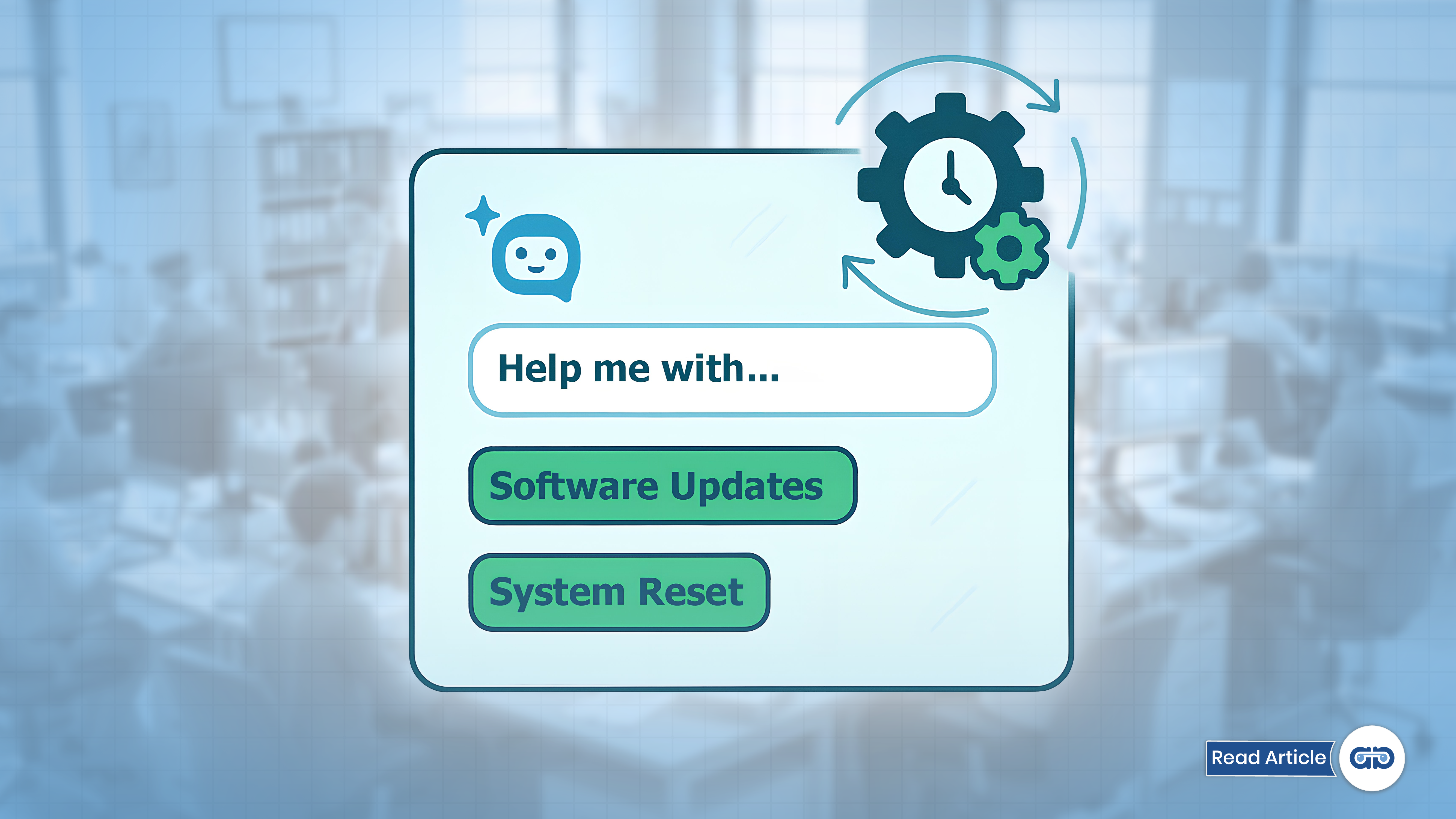Modern enterprises depend on uninterrupted access to IT systems, applications, and infrastructure. Yet delays in resolving IT issues, ranging from password resets to application access, remain one of the most common sources of productivity loss. Traditional helpdesk models rely heavily on human intervention, often leading to long wait times, backlogs, and rising frustration among employees.
Self-service portals provide a strategic alternative. By giving employees the tools to solve routine problems independently, organizations dramatically reduce resolution times while simultaneously improving efficiency, user experience, and IT team performance. This blog explores the role of self-service portals in cutting IT resolution times, detailing their design, benefits, and long-term impact.
What are Self-Service Portals
A self-service portal is a digital platform where users can perform IT-related tasks without direct assistance from support staff. These portals consolidate services such as password management, access requests, troubleshooting guides, and software installation into a single interface.
Main Components
• Knowledge base (Articles, FAQs, and tutorials for troubleshooting)
• Automated workflows (Predefined processes for access requests, resets, installations, and more)
• Search functionality (Robust search tools to quickly locate relevant content)
• Chatbots or AI assistants (Conversational support for guiding users)
Difference from Traditional Helpdesks
While traditional helpdesks rely on ticket-based interactions, self-service portals enable real-time resolution of common issues. Instead of waiting for IT staff’s availability, employees resolve problems immediately.
Why Speed of Resolution Defines IT Efficiency
When systems fail or access issues arise, every minute counts. The longer it takes to resolve a problem, the more it disrupts workflows, drains resources, and erodes employee confidence. Fast resolution is practically a business advantage.
Let’s check them out.
Impact on Productivity
Delays in IT support stall work, causing employees to miss deadlines or waste hours waiting for minor fixes. Across a large workforce, these delays accumulate into significant productivity loss.
Cost Implications
Extended resolution times translate into higher operational costs. Longer support interactions consume IT resources and reduce overall efficiency.
Employee Experience
Slow IT responses frustrate employees, lowering morale and trust in IT as an enabler. Self-service portals reverse this by ensuring quick, reliable solutions.
How Self-Service Portals Cut Resolution Times
Modern self-service portals transform how quickly issues are resolved across the organization.
1. Instant Access to Solutions
Knowledge bases and AI-powered search functions allow employees to resolve issues themselves in minutes, compared to hours or days when waiting for IT ticket resolution.
2. Automated Password Resets and Unlocks
One of the most common IT tickets involves account lockouts. Portals with automated reset workflows eliminate the need for IT intervention, providing immediate access restoration.
3. Streamlined Access Provisioning
Through predefined workflows, employees request and receive access to applications or systems without waiting for manual IT approval. Automated rules enforce compliance while minimizing delays.
4. Guided Troubleshooting
Step-by-step tutorials, interactive guides, and virtual assistance lead employees through the resolution of frequent problems, reducing dependency on IT staff.
5. Integration with ITSM Tools
When issues cannot be resolved via self-service, portals integrate with ITSM platforms to escalate tickets with all relevant contexts already captured. This shortens subsequent resolution times.
6. 24/7 Availability
Unlike traditional IT support hours, self-service portals are always on. Employees can resolve issues during off-hours or across time zones, ensuring zero downtime for global teams.
7. Proactive Issue Detection
Some advanced portals leverage analytics to identify recurring problems or system anomalies and suggest preventive actions before users even raise a ticket.
8. Personalized User Dashboards
Portals can display user-specific data like recent requests, FAQs, and relevant guides. This helps employees find the most relevant solutions instantly.
9. Multichannel Access
Employees can access the portal from desktop, mobile, or chat interfaces, ensuring faster resolutions regardless of device or location.
10. Continuous Feedback Loop
Feedback options after each interaction help IT teams update articles, refine workflows, and enhance the accuracy of AI-driven recommendations, creating a continuously improving ecosystem.
Building Effective Self-Service Portals
The best self-service portals combine intuitive design, accurate content, and smart personalization to make problem-solving effortless for users. When done right, they reduce ticket volumes, improve satisfaction, and empower employees to resolve issues independently.
User-Centric Design
Knowledge base articles should be concise, accurate, and regularly updated. Outdated or unclear instructions damage user trust and reduce effectiveness.
Robust Search Capability
Search engines should support natural language queries, synonyms, and typo tolerance, ensuring employees find relevant content quickly.
Mobile Accessibility
As remote and hybrid work expands, portals must function seamlessly across different devices, such as desktop, mobile, and tablet.
Personalization
Role-based views present users with relevant content and services, avoiding information overload and streamlining navigation.
Governance and Continuous Improvement
Strong governance throughout Self-service portals ensures content stays accurate, feedback drives enhancements, and analytics reveal performance gaps.
Ownership and Accountability
Assign clear roles for portal content creation, review, and updates. Governance prevents outdated information from undermining effectiveness.
Feedback Mechanisms
Allow employees to rate articles, suggest improvements, or report gaps. This feedback loop drives ongoing optimization.
Analytics and Metrics
Track usage statistics, search success rates, and ticket deflection metrics to measure portal effectiveness and identify improvement areas.
Security and Compliance
Automated workflows for access provisioning must follow strict approval and auditing protocols to prevent unauthorized access.
All in All
Self-service portals are transforming IT support from reactive ticket management into proactive, user-driven service delivery. As AI and automation advance, portals will evolve into intelligent ecosystems that anticipate user needs, recommend solutions, and resolve issues before they occur.
Organizations that prioritize portal adoption gain measurable advantages: reduced resolution times, increased productivity, and scalable IT efficiency. In a digital-first workplace, self-service portals are a necessity for operational resilience and employee empowerment.

